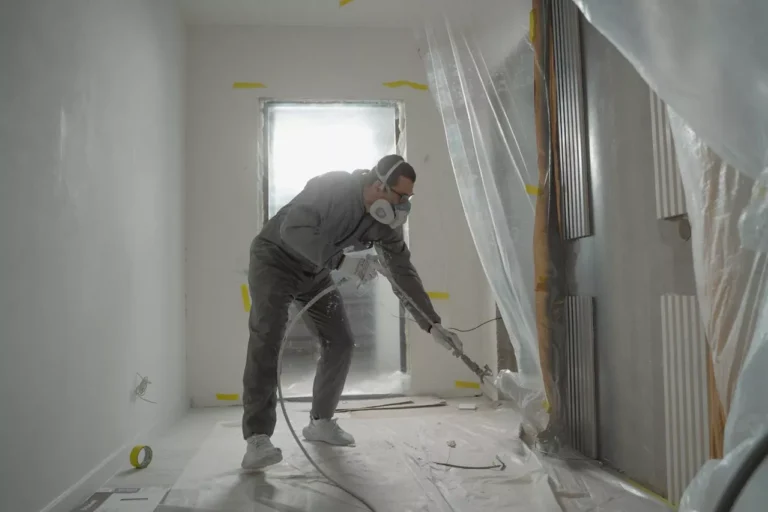
SCI-Arc Launches Wildfire Rebuilding Task Force
In response to the devastating wildfires that have swept through the Altadena and Pacific Palisades communities, the Southern California Institute of Architecture (SCI-Arc) has launched the Resilient Futures Task Force—a new initiative designed to help communities recover, rebuild, and prepare for future climate-driven disasters.
Led by SCI-Arc faculty member Erik Ghenoiu, the task force brings together a dynamic team of SCI-Arc architects and educators, renowned landscape architecture firm Terremoto, and a network of community partners. Together, they are committed to supporting homeowners and neighborhoods affected by recent firestorms by offering design expertise, educational resources, and practical tools that ease the burden of rebuilding.
Designing for Recovery and Resilience
“The Resilient Futures Task Force is about facing challenges head-on and making a practical, necessary difference,” says SCI-Arc Director Hernán Díaz Alonso. “Architecture is about change—transforming spaces and lives. For those who have experienced loss and disruption, rebuilding isn’t only about physical structures—it’s about emotional recovery and long-term support. This task force reflects our commitment to using design as a tool for healing and adaptation.”
As a leading institution in architectural innovation, SCI-Arc understands the dual need for immediate relief and sustainable, long-term rebuilding solutions following environmental disasters. The Resilient Futures Task Force responds to this need by integrating education, design, research, and public engagement into a coordinated effort that empowers fire-affected communities and guides them toward resilience.
Core Goals of the Task Force
The Resilient Futures Task Force operates under four guiding pillars:
- Education and Expertise
SCI-Arc faculty will lead specialized workshops and programs tailored to homeowners, builders, and local leaders. These sessions will focus on sustainable design principles, the use of fire-resistant materials, and technologies that can reduce vulnerability to future wildfires. The aim is to provide accessible, actionable knowledge to help communities rebuild smarter and safer. - Community Engagement
Recovery must be rooted in collaboration. The task force emphasizes partnerships with residents, city officials, non-profits, and regional agencies to identify the unique needs of each neighborhood. These relationships help shape locally tailored strategies that are both effective and inclusive. - Research
The team is conducting a comprehensive study that combines advanced geospatial mapping with firsthand field data to understand how the fires spread, what construction materials contributed to destruction, and what helped some homes survive. This research will inform both policy recommendations and on-the-ground rebuilding strategies, ensuring future development aligns with environmental realities. - Design Solutions for Resilience
Drawing on SCI-Arc’s deep expertise in architectural design, the task force will develop blueprints for fire-resilient homes and community spaces. These designs will prioritize sustainability, structural safety, and adaptability—equipping neighborhoods with the tools to withstand future disasters.
Building Back Better: A New Vision for Wildfire-Affected Communities
SCI-Arc’s commitment extends beyond emergency response. The Resilient Futures Task Force is creating a comprehensive resource packet for homeowners and local leaders, containing valuable research insights, recommended design practices, and planning guidelines tailored to wildfire-prone regions. These materials will serve as a roadmap for rebuilding and will be shared widely with affected communities.

“As architects, we may not solve climate change directly, but we can ask important questions,” says Zeina Koreitem, SCI-Arc faculty and task force member. “How can we build differently? How can we adapt the way we live to coexist with the natural environment rather than simply consume it?”
This perspective is at the heart of the task force’s mission. Rather than treating rebuilding as a return to the status quo, SCI-Arc views this moment as an opportunity to reimagine how architecture can serve people in the face of climate threats.
Public Events and Community Forums
Beyond design and research, the task force is hosting a series of public events aimed at raising awareness, sharing ideas, and fostering dialogue between professionals and the communities they serve. These gatherings are critical to the task force’s strategy, ensuring a participatory approach to recovery.
A recent event, Building Back Houses, brought together architects, residents, and local officials to explore practical and creative ways to rebuild homes that are both livable and fire-resistant. The conversation included topics like compact site design, cost-efficient construction, and material selection.
Upcoming events include Rebuilding After Disaster, a community-focused program that addresses the unique challenges of reconstruction in fire-prone areas. Participants will discuss zoning regulations, insurance barriers, and how to access rebuilding support programs. These forums create a space for exchanging knowledge and sharing real-world experiences, ensuring recovery plans are rooted in the needs of the people most affected.
A Broader Vision for Resilience
Through the Resilient Futures Task Force, SCI-Arc aims to establish a new standard for post-disaster rebuilding—one that prioritizes resilience, equity, and innovation. The initiative reflects a growing recognition in the architecture field that climate adaptation must be integrated into every aspect of the built environment.
SCI-Arc’s efforts are especially critical as climate change accelerates the frequency and intensity of wildfires across California and beyond. The Resilient Futures Task Force is not just a response to a single disaster—it’s a model for how the architecture community can engage meaningfully in long-term recovery and climate preparedness.




